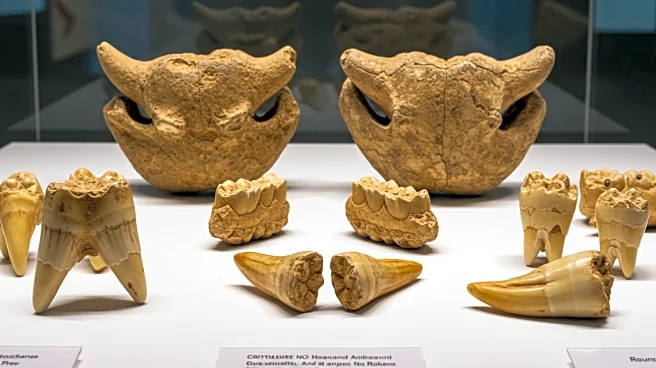What is the story about?
What's Happening?
Recent developments in scientific publishing have highlighted the use of large language models (LLMs) to generate citation diversity reports (CDRs). These reports aim to address the systemic under-citation of women and minority authors compared to their male and majority counterparts. CDRs provide a demographic analysis of cited authors, promoting diversity and inclusivity in scientific research. Academic databases like ORCID are encouraging authors to self-report their gender, race, and ethnicity to improve the accuracy of these reports. However, due to limited self-reported data, name-based demographic predictions are commonly used, despite their imperfect accuracy. Tools like cleanBib automate these predictions, querying databases such as Gender API and Ethnicolr, which have accuracy rates of 96.1% and 83%, respectively.
Why It's Important?
The implementation of citation diversity reports is significant as it addresses biases in scientific research visibility and career advancement for underrepresented groups. By quantifying the demographic distribution of cited authors, CDRs can influence the selection of research questions and the overall diversity of scientific discourse. This initiative supports the broader movement towards inclusivity in academia, potentially leading to more equitable recognition and opportunities for minority scientists. Journals that adopt CDRs can track and improve their citation diversity, contributing to a more balanced representation in scientific literature.
What's Next?
As the use of citation diversity reports becomes more widespread, academic institutions and journals may increasingly adopt these tools to enhance diversity in scientific publications. The accuracy of demographic predictions will likely improve as more authors voluntarily disclose their information, reducing reliance on name-based predictions. This could lead to more comprehensive and reliable CDRs, further promoting inclusivity in science. Additionally, ongoing discussions about the ethical implications of demographic predictions may shape future practices in citation diversity analysis.
Beyond the Headlines
The push for citation diversity reports reflects broader societal efforts to address systemic biases and promote inclusivity. This initiative may inspire similar practices in other fields, encouraging a reevaluation of how diversity is measured and valued. The ethical considerations surrounding demographic predictions highlight the need for transparency and consent in data collection, potentially influencing future policies in academic publishing.
AI Generated Content
Do you find this article useful?











